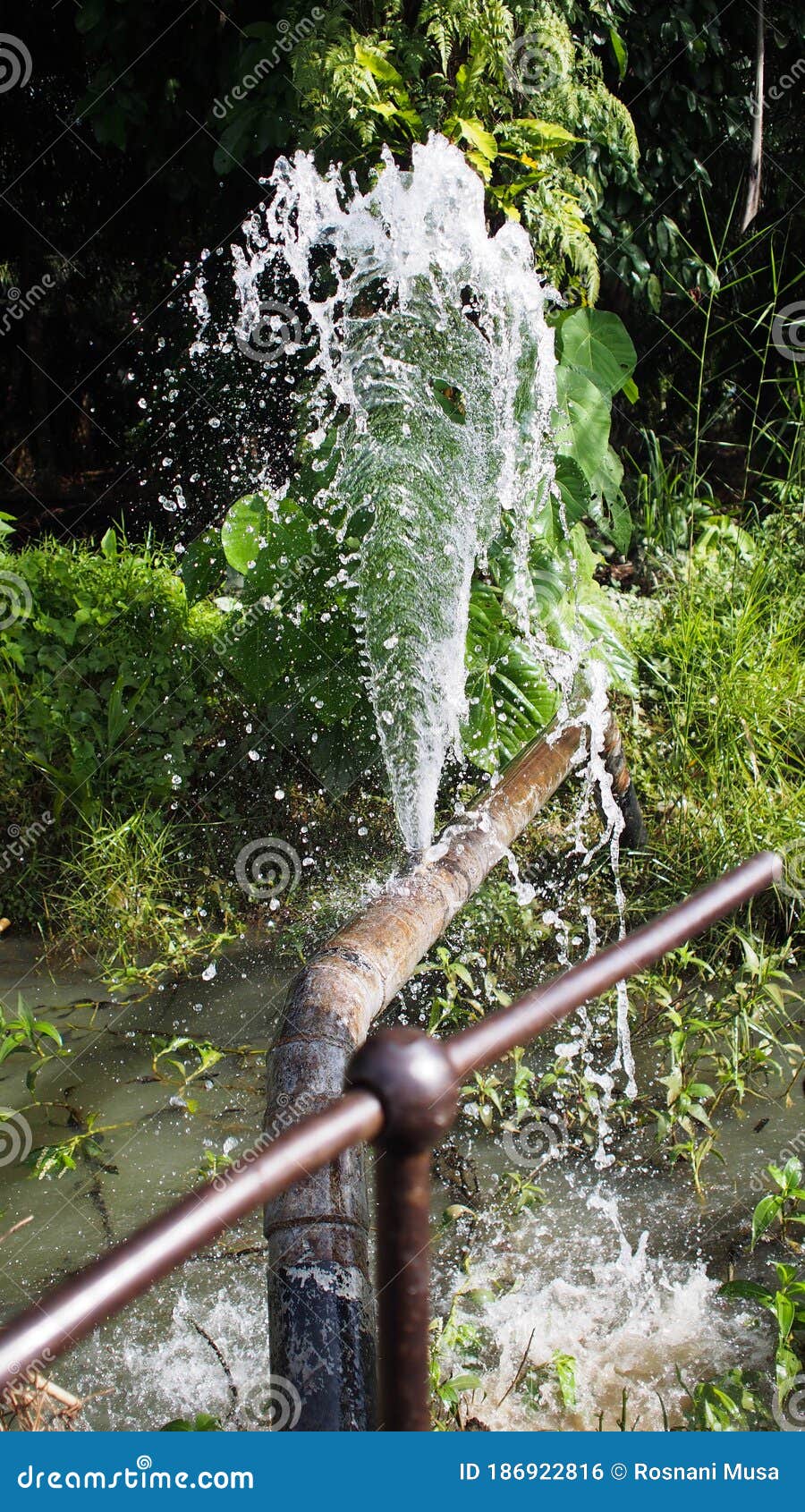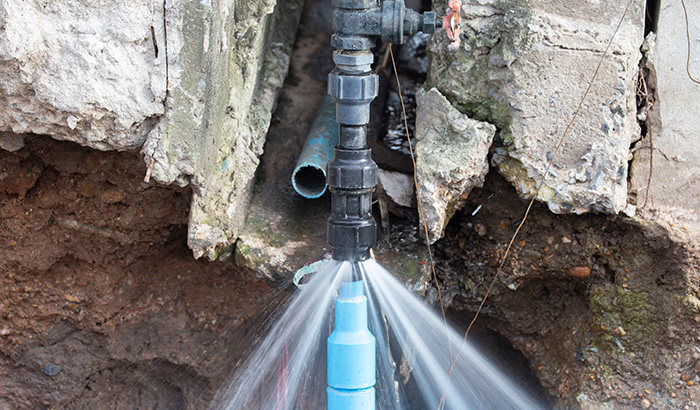The Hidden Dangers of a Burst Pipe and How to Fix It Quickly
The Hidden Dangers of a Burst Pipe and How to Fix It Quickly
Blog Article
Stopping Ruptured Piping: Crucial Tips to Protect Your Pipes
Avoiding burst pipes is an important issue for house owners, specifically during colder months when the threat of freezing is heightened. Executing tactical actions such as proper insulation, regular inspections, and maintaining regular interior temperature levels can considerably reduce the probability of pipeline failure.
Understand Pipeline Vulnerabilities
Comprehending pipeline vulnerabilities is important for efficient pipes upkeep and protecting against expensive damage. A number of aspects contribute to the sensitivity of pipelines to bursts, consisting of product structure, age, and environmental problems. Older pipelines, particularly those made from galvanized steel or polybutylene, commonly deteriorate in time, resulting in raised danger of leakages and tears.
Temperature level fluctuations can likewise dramatically influence pipeline integrity. In chillier environments, water entraped in pipes can freeze, applying and increasing pressure on the pipe wall surfaces, which might eventually result in a ruptured. High water stress can stress pipelines, especially at joints and bends, increasing the probability of failing.

Insulate Water Lines Correctly
Appropriate insulation of pipelines is vital for protecting against cold and subsequent ruptureds during cool weather condition (burst pipe). Protecting your pipes system successfully safeguards versus temperature goes down that can bring about pricey damages. Begin by identifying at risk locations where pipelines are subjected to outside temperature levels, such as basements, attic rooms, and outside wall surfaces
Use foam pipeline insulation sleeves or wrap insulation tape around these areas to offer a safety obstacle. Make certain that all areas of the pipes, particularly those with limited heat exposure, obtain sufficient insulation. Pay unique interest to fittings and joints, as these are much more susceptible to cold.
When shielding, it's vital to pick products that satisfy local building regulations and are ideal for the specific setting. For example, fiberglass insulation is typically recommended for its thermal resistance residential properties - burst pipe. In addition, take into consideration making use of warm cables or tape in severe problems, which can be connected in to offer supplemental warm
On a regular basis check protected pipelines for any type of indicators of wear or damages, as endangered insulation can diminish its performance. By taking these proactive steps, you substantially reduce the danger of pipeline bursts, ensuring a reputable plumbing system throughout the wintertime months.
Maintain Regular Temperature
A steady interior temperature level is important for preventing burst pipes during the icy months. When temperature levels decline, water within pipes can ice up, creating and broadening pressure that might eventually create the pipelines to ruptured. To mitigate this risk, house owners must keep a regular temperature throughout their home, preferably no reduced than 55 ° F(13 ° C)Making use of a programmable thermostat can aid handle interior temperature levels properly, ensuring that spaces with pipes continue to be cozy also when the residence is unoccupied. Pay special interest to areas that are much more vulnerable to chilly, such as attic rooms, cellars, and garages. Maintaining closet doors open under sinks can likewise enable warmer air from the home to circulate around pipes.
This minor flow of water can prevent freezing by alleviating stress within the pipes. By carrying out these techniques, house owners can substantially decrease the threat of pipeline ruptureds and safeguard their pipes systems versus the rough winter months elements.
Regularly Inspect Pipes
Regular inspections of plumbing systems are important for protecting against burst pipes and keeping general home stability. Routine checks permit homeowners to identify potential issues prior to they rise right into pricey repairs or major water damages. Throughout these examinations, it is essential to check out visible pipelines for indications of rust, leakages, or put on. Pay unique focus to locations susceptible to read review freezing, such as basements, attic rooms, and outside wall surfaces.
In addition, evaluating links and joints is important, as these factors are usually vulnerable to leakages. Property owners ought to likewise evaluate water pressure levels, as extreme pressure can stress the plumbing system and raise the danger of pipe ruptureds.
Think about organizing expert pipes evaluations at least when a year, especially before winter months, to ensure your system is prepared for cooler temperatures. By being aggressive in your strategy, you can protect your home against the pricey and turbulent effects of ruptured pipelines.
Know Emergency Situation Procedures
Recognizing emergency treatments is crucial for every single homeowner, especially after conducting routine plumbing inspections. Being planned for a pipes emergency can considerably mitigate damage and save prices. Initially, situate your major water shut-off valve; it is generally discovered near the water meter or where the primary line enters your home. Acquaint on your own with its procedure, as turning off the water supply quickly can stop extensive flooding.
Next, maintain essential tools handy. A pipes emergency package ought to consist of a wrench, plunger, and towels, as well as a flashlight and a container for little leaks. Furthermore, consider having the contact details for a trusted plumber easily available, should the scenario intensify past your control.
If you discover a leak or burst pipeline, quickly switch off the water system and alert your plumbing professional. In addition, document the damage with pictures for insurance policy functions. burst pipe. Recognize the indications of potential pipes issues, such as unusual water pressure variations or damp areas on wall surfaces
Eventually, aggressive understanding and swift action are critical in managing plumbing emergencies, ensuring your home stays secured and decreasing possible damage.

Conclusion
In final thought, preventing burst pipes requires a complex method that consists of understanding pipeline vulnerabilities, proper insulation, keeping regular interior temperature levels, normal evaluations, and knowledge of emergency situation you can check here treatments. By implementing these essential techniques, the threat of pipes failings can be dramatically decreased, thereby guaranteeing the durability and effectiveness of the pipes system. Aggressive procedures not only guard against prospective damage however also add to total water conservation and the security of residential property.
In colder climates, water trapped in pipes can ice up, expanding and exerting pressure on the pipe walls, which might inevitably lead to a ruptured. When temperature levels decrease, water within pipes can ice up, developing and expanding stress that might inevitably trigger the pipelines to ruptured. By applying these approaches, home owners can considerably lower the risk of pipe ruptureds and safeguard their plumbing systems versus the severe winter months elements.

Report this page